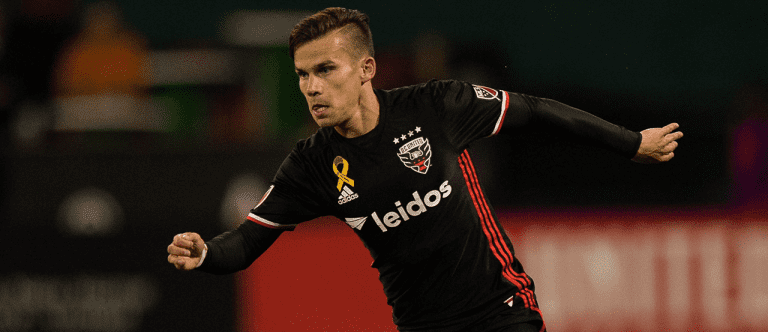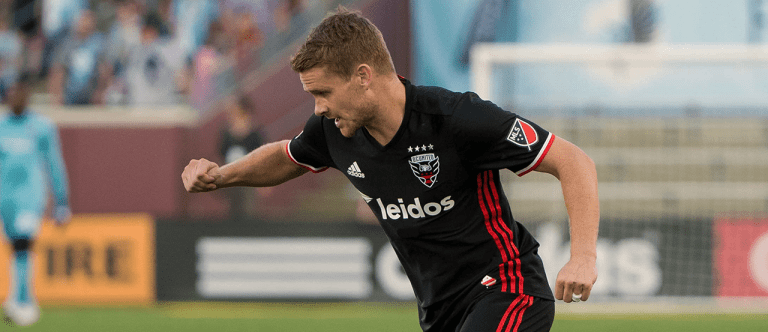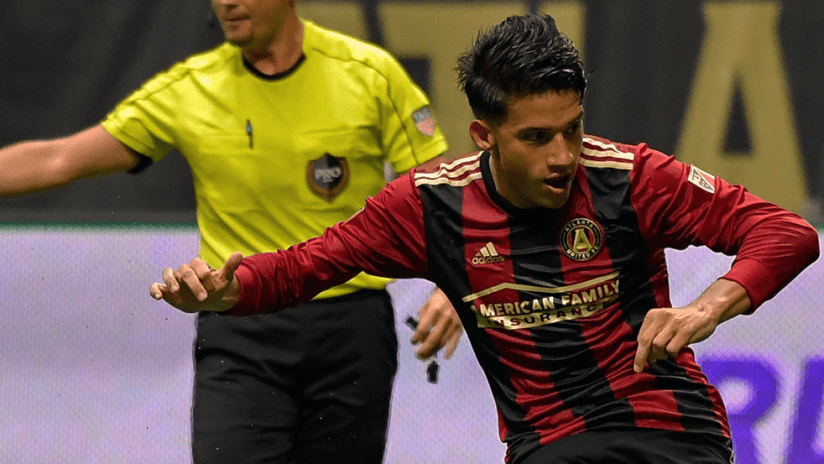On Wednesday, D.C. United acquired the rights to winger Yamil Asad from Atlanta United for a total of at least $500,000 in Allocation Money spread over two years. Asad spent the 2017 season with the Five Stripes on loan from Argentine club Velez Sarsfield, earning acclaim from Atlanta fans both for his industrious style and his production. He finished the season second on the team in assists (13), fourth in goals (7) and third in minutes played.
With D.C., Asad provides another piece for head coach Ben Olsen in the attack, as they look to return to the playoffs after missing them last year for the first time since 2013.
In order to think about how D.C. could – and/or should – use Asad, we need to think about Asad on the field: He’s a good player who does everything above average, but nothing exceptionally; he’s a two-way player, defending with as much attention and ferocity as he does in the attack; he plays with a noticeable energy and desire; he keeps the game simple and plays within himself.
United seem to have three options: one obvious, one risky and one way outside-the-box.
The obvious option

D.C. winger Zoltan Stieber | USA Today Sports Images
D.C. could add Asad to the rotation at winger in Olsen’s 4-2-3-1. Paul Arriola seems likely to start on one side, so Asad and Zoltan Stieber would fight for minutes on the other. Either could also fill in if Luciano Acosta tires or struggles in the central attacking role behind United's striker. D.C. has a difficult schedule, largely due to the opening of Audi Field (starting with 12 of 14 games on the road), so Asad adds depth that should come in handy.
The risky one

D.C. United striker Patrick Mullins celebrates | USA Today Sports Images
Olsen could choose to use Asad as a striker, a position he never played in Atlanta. If you look at United's options across the front four — Arriola and Stieber at winger, Acosta behind the striker, and Patrick Mullins or Darren Mattocks at striker — the No. 9 position seems the most open for playing time. Asad as striker could maximize the overall talent, allowing Olsen to put his most skillful players on the field simultaneously.
There's no reason Asad couldn’t play the position, despite the potential to mitigate his two-way effectiveness. Yet that makes perhaps even more sense for a Ben Olsen team. Olsen values hard work and discipline as much as any coach in the league. He doesn’t want to play someone up there who doesn’t defend. If anyone wants to put a gritty, industrious guy up top to wreak havoc and lead the line through sheer force of will, it’s Olsen. It’s tough to say how well Asad would take to specific parts of playing forward – specifically battling to hold up the ball against bigger center backs – but it would allow DC to play an enticing quartet of Arriola, Acosta, Stieber and Asad. Since D.C. already has an uphill battle this year, it could be worth it to swing a heavier bat.
Way outside the box

D.C. United left back Taylor Kemp | USA Today Sports Images
Last, and almost certainly least likely … D.C. could move Asad to left back.
Taylor Kemp and the just acquiredOniel Fisher are both options at the position, but neither has shown they are elite. Asad to left back is outside-the-box, but there’s nothing about his skill set that suggests he couldn’t play outside back. As we already identified, Asad isn’t great at anything in the attacking end. If anything, his best asset as a winger is his defensive reliability; he would go from being a hard-working winger to one of the league's most skilled outside backs. Asad probably isn’t a top-10 winger in the league, but he could be a top-five left back. What’s more valuable for a team: Having a winger who's comparable to the opponent's, or having a left back who's better?
Additionally, Olsen likes to deploy two defensive-minded players in the holding midfield roles. With two players sitting in front of the center backs, it permits the outside backs more freedom to attack. Asad could essentially attack as much as a winger, except with more time and space when he receives the ball from a deeper position. If you think about adding Asad as a winger, does it make D.C. a playoff team in the East? I'm not sure. But if he becomes a top-tier left back and offers something totally new? Then maybe D.C. could be cookin’.
Beyond the tactical choices, there’s an important note to make about Asad’s arrival to D.C. – based on 2017 performance and the trade/loan transactions, it's likely Asad sees a pay raise, and perhaps a significant one. That can alter a player’s mentality. At a lower number, a player might be comfortable just doing the dirty work. At a higher number, a player may feel like he needs to validate his cost. Instead of making the clean 5-yard pass to the center midfielder, he opts for the tricky through ball to the striker.
It coincides with a higher-profile role in the nation's capital. Asad was the fourth horse in Atlanta after Miguel Almiron, Hector Villalba and Josef Martinez; he had a clear and important job, but the spotlight shone elsewhere. Asad never had to question making the 5-yard pass to Almiron. Does it make as much sense to play that to Lucho Acosta? In D.C., Asad will have to take on more responsibility. You can’t blame a player for pushing his limits – it’s always somewhat endearing when a player tries to validate his coach’s faith – but changing a player’s salary and role can have psychological impacts that impact performance. It could be a non-factor, or it could leave D.C. fans scratching their heads.













